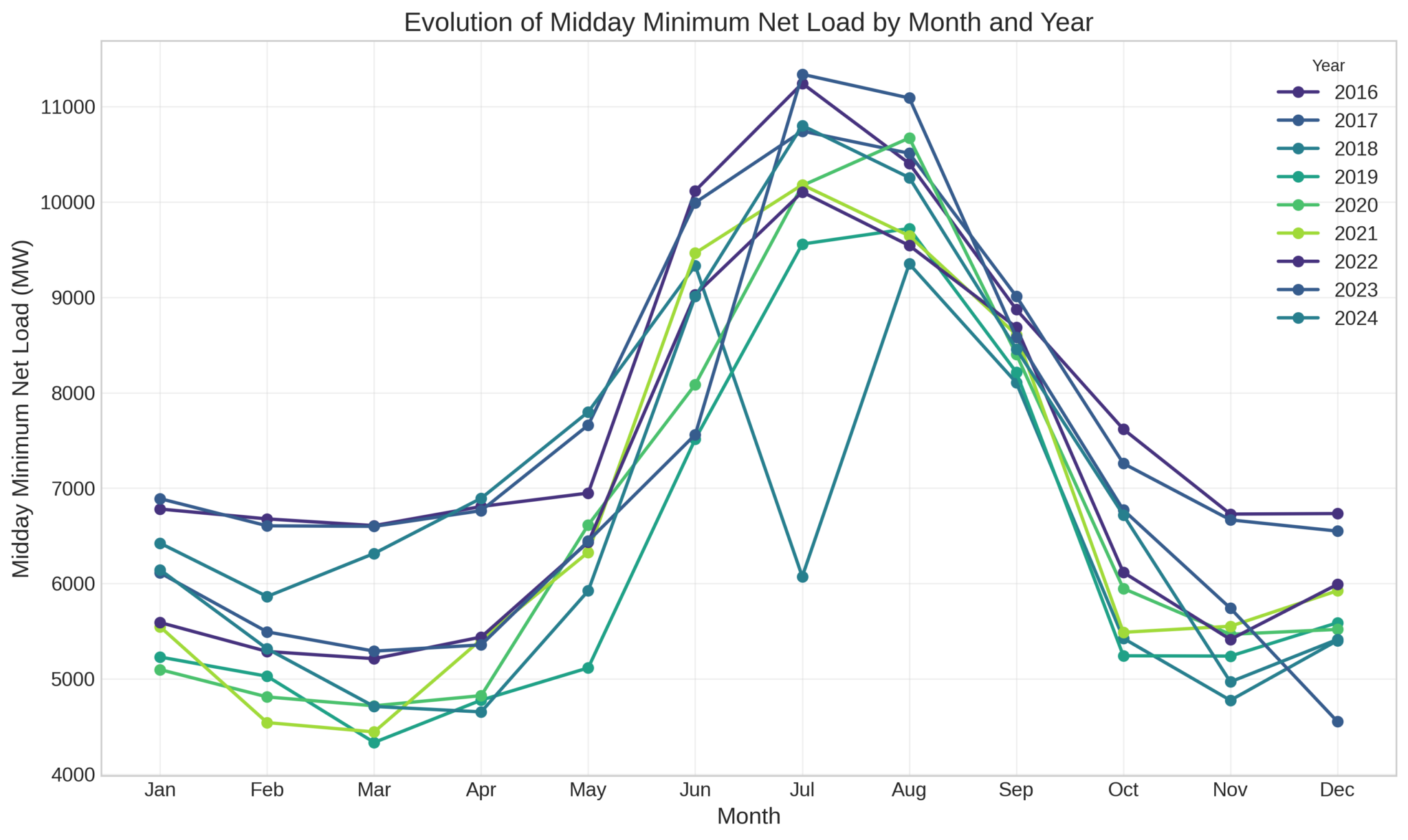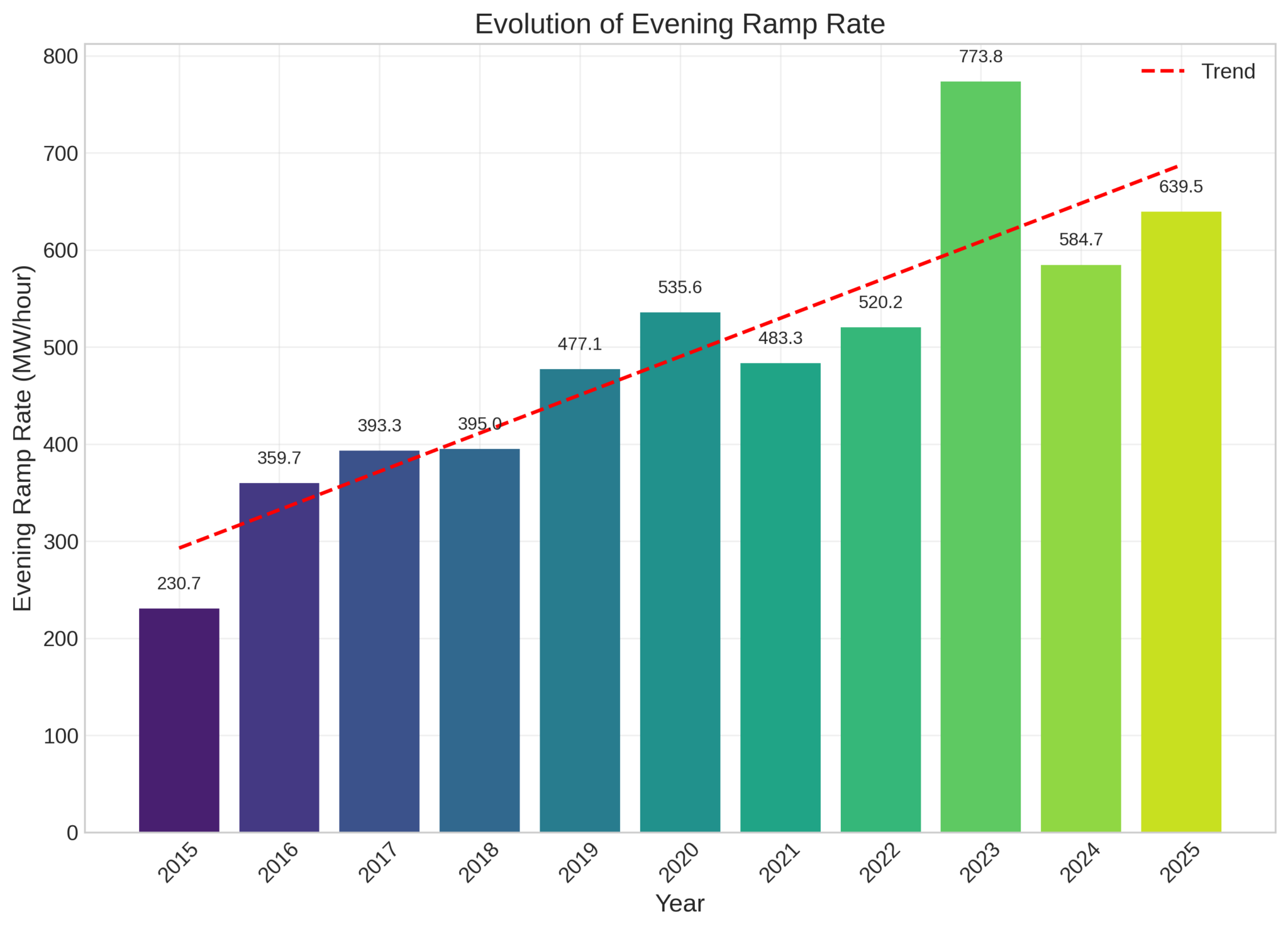The Solar Power Duck Curve: How to Manage Daily Energy
Understanding and Navigating Arizona’s Duck Curve with Solar Topps
Updated: September 23, 2025
Arizona’s solar adoption creates challenges like the duck curve. Learn how Solar Topps helps residents maximize savings and energy independence.
The rapid adoption of renewable energy, particularly solar power, has transformed Arizona’s electrical grid system. As we transition away from fossil fuels, utilities across the state face a unique challenge known as the “duck curve” — a phenomenon that becomes more pronounced as solar adoption increases. For homeowners and businesses in Arizona, understanding the duck curve is key to making smart decisions about solar installation and energy storage. At Solar Topps, we help you navigate these challenges and get the most out of your solar investment with solutions tailored to Phoenix, Scottsdale, and Chandler.
What is the Arizona Solar Duck Curve?
The term “duck curve” was first coined by the California Independent System Operator (CAISO) in 2013 to describe a specific pattern in net power demand. Net demand represents the difference between total electricity demand and power generated from renewable sources like solar. The curve earned its name because its shape resembles a duck’s profile, with a midday dip (the belly) during peak solar production, and a steep evening ramp (the neck) as solar generation declines and demand spikes.
Our comprehensive Arizona Duck Curve Analysis reveals how this phenomenon has intensified across Arizona’s major utilities (APS, SRP, and TEP) over the past five years, with the midday minimum decreasing by approximately 30% since 2020 and evening ramp rates increasing from about 390 MW/hour to over 500 MW/hour in 2024.
Did You Know? The “duck depth” – the difference between morning load and midday minimum net load – has increased by nearly a third in Phoenix and surrounding areas since 2020, creating both challenges and opportunities for Arizona solar adopters.
Why the Duck Curve Matters for Phoenix, Scottsdale, and Chandler Solar Adopters
For anyone considering solar power in the Phoenix metropolitan area, the duck curve highlights two critical challenges that directly impact your energy savings and grid reliability:
-
The Midday Belly (10AM to 2PM in Arizona): During peak sunlight hours (typically 10 AM to 2 PM), solar panels in Arizona generate their maximum output. This creates a significant dip in net demand, as solar power floods the grid, sometimes exceeding local demand. According to the The International Energy Agency’s Electricity 2025 Report, some regions have even experienced negative electricity prices during these periods due to oversupply. In Arizona specifically, our analysis of data from Arizona Public Service (APS), Salt River Project (SRP), and Tucson Electric Power (TEP) shows that this midday dip has become increasingly pronounced, especially during spring and fall months when solar production is high but overall demand is moderate. For solar adopters in Phoenix, Scottsdale, Chandler, and other Arizona cities, excess energy generated during the day may be less valuable unless you can store or use it effectively.
-
The Evening Ramp (4PM to 8PM in Arizona): As the sun sets and solar generation declines, there’s a steep increase in net demand as people return home and increase electricity usage. This requires conventional power plants to ramp up generation quickly, which can strain grid infrastructure and lead to reliability issues. Our analysis shows that in Arizona, this evening ramp has become steeper each year, with ramp rates increasing by over 28% since 2020. For solar users in Phoenix, Scottsdale, and Chandler, this means that without energy storage, you may still rely heavily on the grid during peak evening hours when electricity rates are highest, potentially reducing your energy independence and savings.
Arizona Duck Curve by the Numbers
- 30% – Decrease in midday minimum load since 2020
- 500+ MW/hr – Current evening ramp rate in 2024
- Spring & Fall – Seasons with the most pronounced Duck Curve effect in Arizona
- 80% – Potential reduction in evening grid reliance with proper battery storage
How Solar Topps Helps Phoenix, Scottsdale, and Chandler Residents Navigate the Duck Curve
At Solar Topps, we specialize in designing solar energy systems that not only generate clean energy but also help you maximize savings and energy independence in Arizona’s unique desert climate. Here’s how we can help you tackle the duck curve:
Custom Solar + Storage Solutions for Arizona Homes
One of the most effective ways to combat the duck curve is by pairing your solar panels with a home battery storage system. Solar Topps offers state-of-the-art battery solutions, including the Tesla Powerwall 3, that allow you to store excess solar energy generated during Arizona’s abundant daytime sunshine and use it during the evening when demand is high.
Our analysis shows that properly sized battery storage can cut your reliance on grid power during peak evening hours by up to 80%, boosting savings under APS, SRP, and TEP time-of-use plans. Learn more about our solar battery storage options in Phoenix.
Tesla Powerwall 3 Now in Stock in Phoenix!
As Arizona’s Premier Tesla Certified Installer, we’ve stocked our Phoenix warehouse with Tesla PowerWall 3’s and Expansion Packs. Meanwhile, while other companies are taking 6 months, we, on the other hand, are getting Phoenix, Scottsdale, and Chandler customers up and running in just 6 weeks.
Phoenix-Optimized Solar System Design
Our experts design solar systems tailored to your energy needs, factoring in Arizona’s desert climate. West-facing panels are ideal for residents in Phoenix, Scottsdale, and Chandler, extending production into the afternoon. This approach flattens the duck curve and boosts savings with time-of-use rates. See our solar design process to learn how we create custom solutions for Arizona homes.
Arizona Utility Time-of-Use (TOU) Rate Optimization
Arizona’s major utilities (APS, SRP, and TEP) all offer time-of-use (TOU) pricing, which charges different rates for electricity based on the time of day. Our analysis shows that the gap between on-peak and off-peak rates has widened in recent years, making it even more important to optimize your solar system.
Solar Topps can help you take advantage of these rates by designing a system that generates the most energy during peak sunlight hours when rates are lowest. We’ll also guide you on how to shift your energy usage to save even more. Explore What’s Driving Up Your Bill? to understand the largest contributors to energy use in your Phoenix, Scottsdale, or Chandler home.
Demand Response Integration for APS, SRP, and TEP Customers
Arizona utilities offer programs that reward consumers for reducing or shifting energy use during peak periods. Solar Topps can help you enroll in these programs and optimize your energy usage to earn credits or lower rates while helping to balance the grid.
Our analysis shows that Phoenix, Scottsdale, and Chandler homeowners with solar + storage systems can earn up to $300 annually through participation in these programs, adding to your overall solar savings.
Grid Modernization and Smart Energy Management for Arizona Homes
Solar Topps stays ahead of the curve by integrating the latest smart grid technologies into our systems. For instance, we use advanced inverters and energy monitoring apps to provide tools that let you track and manage your energy usage in real-time. These features are key to maximizing savings in Arizona’s energy market. Learn more about our smart energy solutions for Phoenix homes.
Solar Only vs. Solar + Storage in Phoenix, Arizona
| Feature | Solar Only | Solar + Storage |
| Evening Power Source | Grid dependency | Stored solar energy |
| APS/SRP TOU Rate Advantage | Limited | Maximized |
| Duck Curve Impact | Contributes to curve | Helps flatten curve |
| Backup During Arizona Outages | None | Available |
| Demand Response Eligibility | Limited | Full participation |
The Future of Solar and the Duck Curve in Phoenix, Arizona
As solar adoption grows across Arizona, including Phoenix, Scottsdale, and Chandler, the duck curve is expected to intensify. By 2030, midday minimums could drop another 25%, while evening ramp rates may rise by up to 40%.
However, thanks to advancements in technology and grid management strategies, these challenges are becoming increasingly manageable. Moreover, the International Energy Agency (IEA) predicts that better energy storage and smart grid systems will play a crucial role in addressing these challenges and enhancing renewable energy integration.
Evolution of Midday Minimum Net Load in Arizona (2020-2024)
At Solar Topps, we are therefore committed to staying at the forefront of these advancements. Investing in solar panels, storage, and smart systems reduces your carbon footprint, saves money, and brings energy independence in Phoenix’s evolving energy market.
Key Takeaways for Phoenix, Scottsdale, and Chandler Solar Adopters with Solar Topps
- Invest in Energy Storage in Phoenix: Pair your solar panels with a battery system like the Tesla Powerwall 3 to store excess energy for use during peak demand periods. Our analysis shows this can increase your savings by up to 30% compared to solar alone. Explore our battery storage options for Phoenix homes.
- Leverage APS and SRP Time-of-Use Rates: Shift your energy usage to align with solar production and take advantage of lower rates from APS, SRP, or TEP. Learn more about TOU rate optimization for Arizona homeowners.
- Optimize Your System for Phoenix’s Desert Climate: Work with Solar Topps to design a solar system that meets your energy needs and maximizes savings in Arizona’s unique desert environment. Check out our solar design process for Phoenix homes.
- Stay Ahead with Smart Energy in Arizona: Use our smart energy tools to monitor and manage your energy usage in real-time.
Evolution of Evening Ramp Rates in Arizona (2020-2024)
Special Considerations for EV Owners in Scottsdale and Chandler
EV owners in Scottsdale and Chandler face challenges and opportunities with the duck curve. Evening charging can cost more with time-of-use rates, but a solar + storage system helps.
- Charge your EV using stored solar during peak hours
- Join special EV rate plans from APS and SRP
- Potentially use your EV as extra home battery storage in the future
Contact us to learn about our solar + storage packages for EV owners.
Ready to Go Solar with Solar Topps in Phoenix, Arizona?
The duck curve shows Arizona’s opportunity to modernize power systems for a renewable future. With the right strategies, solar users in Phoenix, Scottsdale, Gilbert, and Chandler can create a resilient energy grid. At Solar Topps, we guide you with custom solar designs and advanced battery storage solutions in Phoenix. Maximize your solar investment and navigate Arizona’s duck curve for your home or business. Contact Solar Topps to schedule a consultation and start your energy independence journey today. Learn more about our services and how we help you meet your solar goals. Get Arizona’s Best Quote and take control of your energy today!















